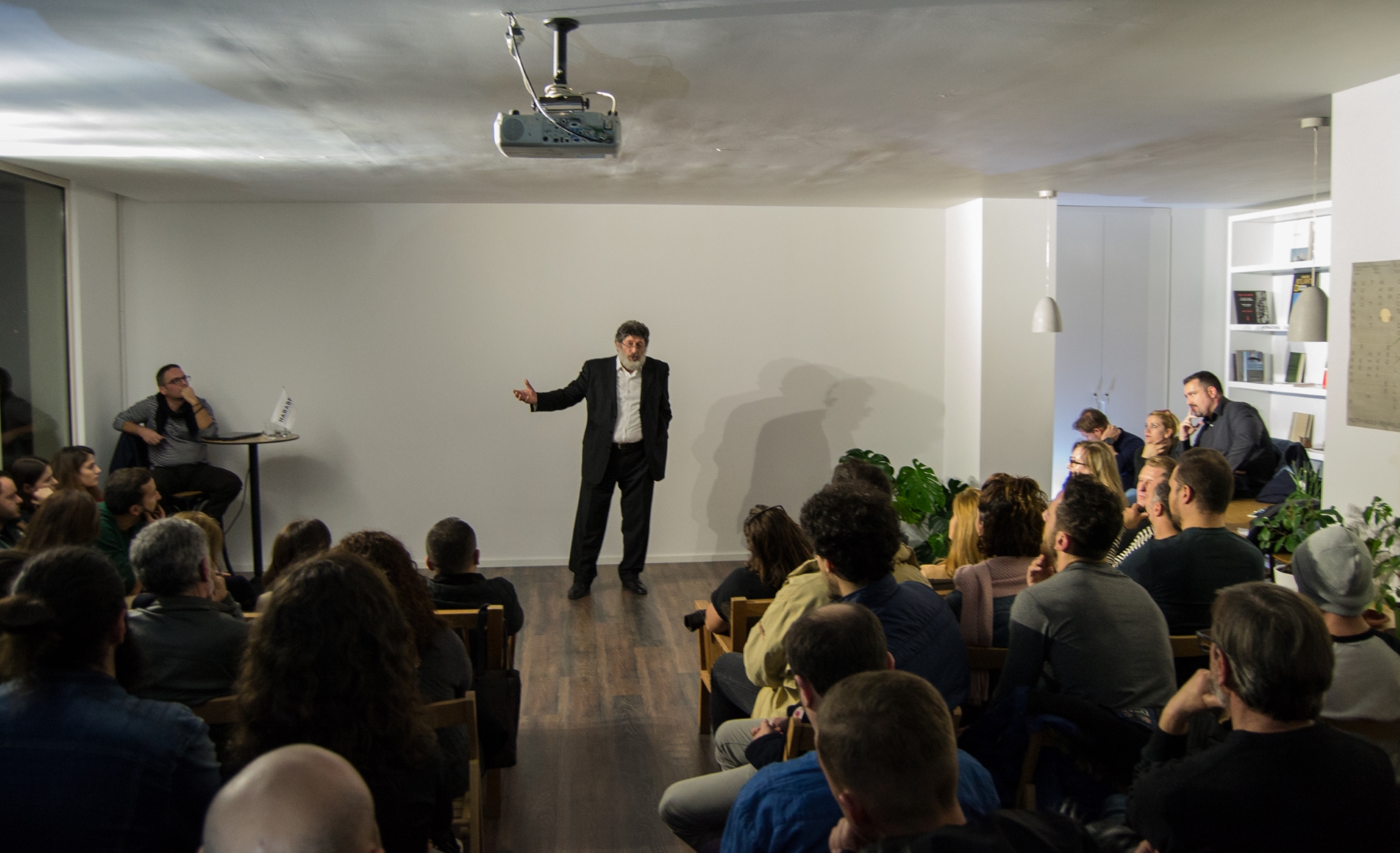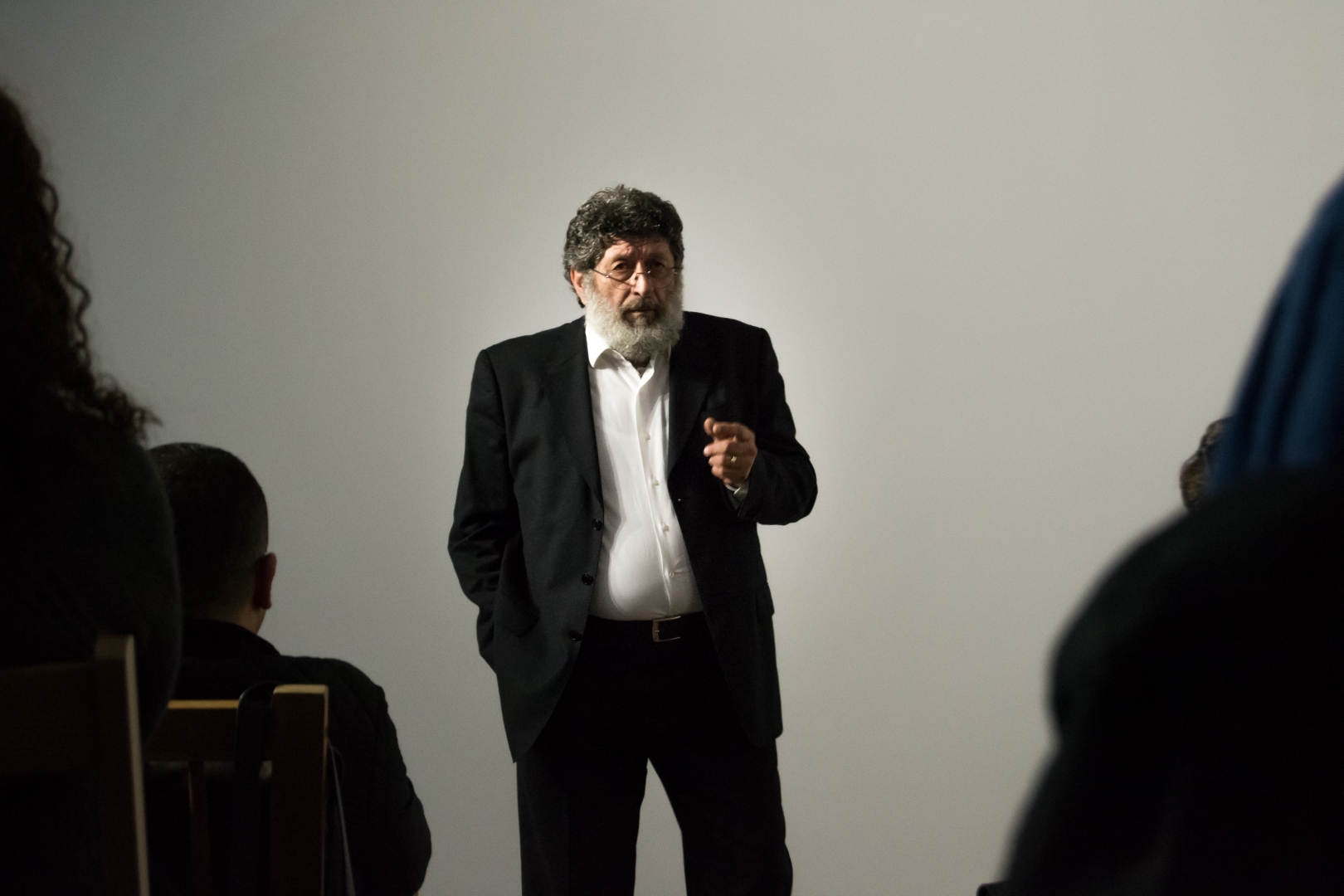On November 14th 2019, in the premises of Harabel Contemporary Art Platform, Gazmend Leka – an artist with a long experience in both artistic creativity and art pedagogy – held a talk entitled “An Apocryphal Confession”. At the meeting in question, the artist took on a self-confession and engaged in a conversation with the audience about his life and professional experience, choosing to be more than a professional, human, as a creature and creator (biologically and artistically), confessing the shades of an Earthly creator.

Gazmend Leka has a saying, which represents almost every step of his artistry: “I have always considered painting as a long prayer, which begins daily with the rising of the sun. This rite has accompanied me on my journey to discover and find the old language, the lost language I once knew, before the FALL, when I spoke to the stone, the tree, the fruit, the snake. This prayer becomes deeper day by day, permeates and allows me to speak freely to things that have already died. What they say make my creations follow, one after another”.
Analysing oneself in front of those present, whether known or unknown, requires courage, but it is also an intellectual obligation, and the experience of many is worth like a piece of mosaic in the recognition of human activity. Recognition, was the opening topic of Gazmend Leka’s talk which states that knowing what to choose at a time when knowledge flows from many sources is rather difficult, but it is also difficult to impartially evaluate these sources without being influenced by political constraints, at a time when resources are scarce.
According to Gazmend Leka, the human soul is charcoal turned into a diamond thanks to art, and art starts with mythology, which is essentially true. Once upon a time, things happened and they were told in stories, in myths. In terms of Albanian mythology, it matches the data and the spirit that accompanies world mythology. So early on, the experience of people in different geographic locations and with weak and slow connecting threads – despite today’s opportunities thanks to science and technology – turns out to have been almost the same. So, recapturing Albanian mythology, as well as its pictorial examination and illustration, besides attempting to escape the ideology of that time (during the dictatorship in Albania), for the artist in question it has served as time travel, a mysterious journey. Journeys, are always ways of knowing, and at this point, Gazmend Leka recalls the example of Homer’s Odyssey, the escape, return, abandonment, losses along his life journey, which is, after all, more or less the trajectory of the artist in question, but also of any man.
Gazmend Leka claims that the desire for confession arises from the inability of man to bear the weight of secrecy. The painting itself is a kind of confession, though for many not an easily understood confession. This is also due to the heavy language in his paintings, the themes and colours used by the author, for which, the breakdown of his work through speech is literally impossible too. “I can’t tell the painting, but I can talk about the laboratory where it’s done,” he said.
* Gazmend Leka was born on October 11th, 1953 in Tirana. He is an artist with long experience as a painter, graphic artist, illustrator, animated film director and painter and museum hall designer. In 1978 he completed his studies at the Academy of Arts and a year later began working as a collaborator on the design and realization of the interior of the museum “Gjergj Kastrioti – Skanderbeg” in Kruja, which he completed in 1982. For a period of 10 years (1981-1991) he becomes the artistic director of cartoon films at the “New Albania” (“Shqiperia e Re”) film studio working as their director. In 1991 he started working as a professor at the Academy of Arts, today the University of Arts (Professor of “Painting” and “Theory of Color”). Gazmend Leka has participated in 170 group exhibitions and has opened 20 solo exhibitions. The National Gallery of Art preserves 37 of his paintings and graphics. Over 400 other works have been distributed in private collections in: Albania, America, France, Switzerland, Italy, Turkey, Russia, Germany, the Netherlands, Spain, Canada and Japan.





